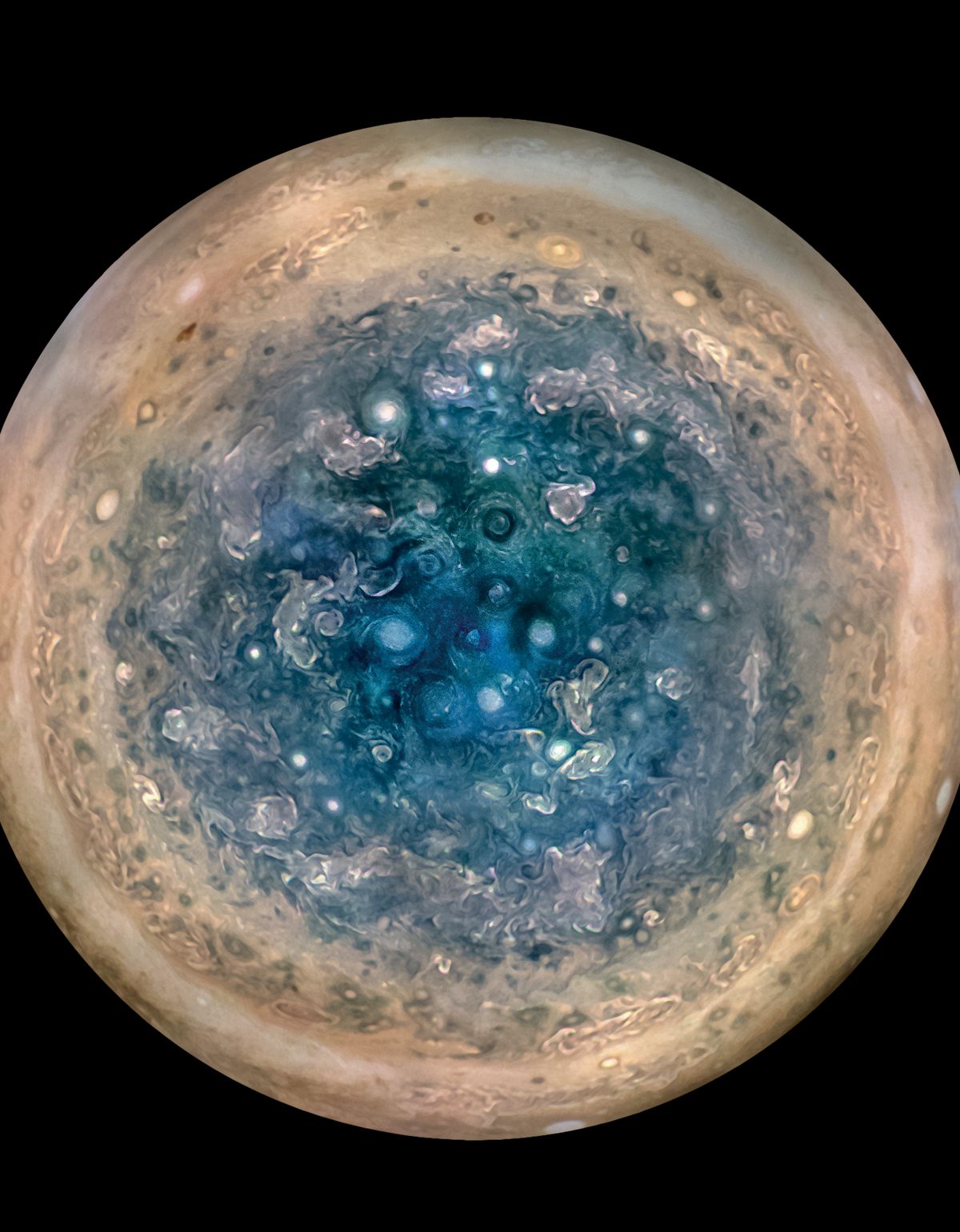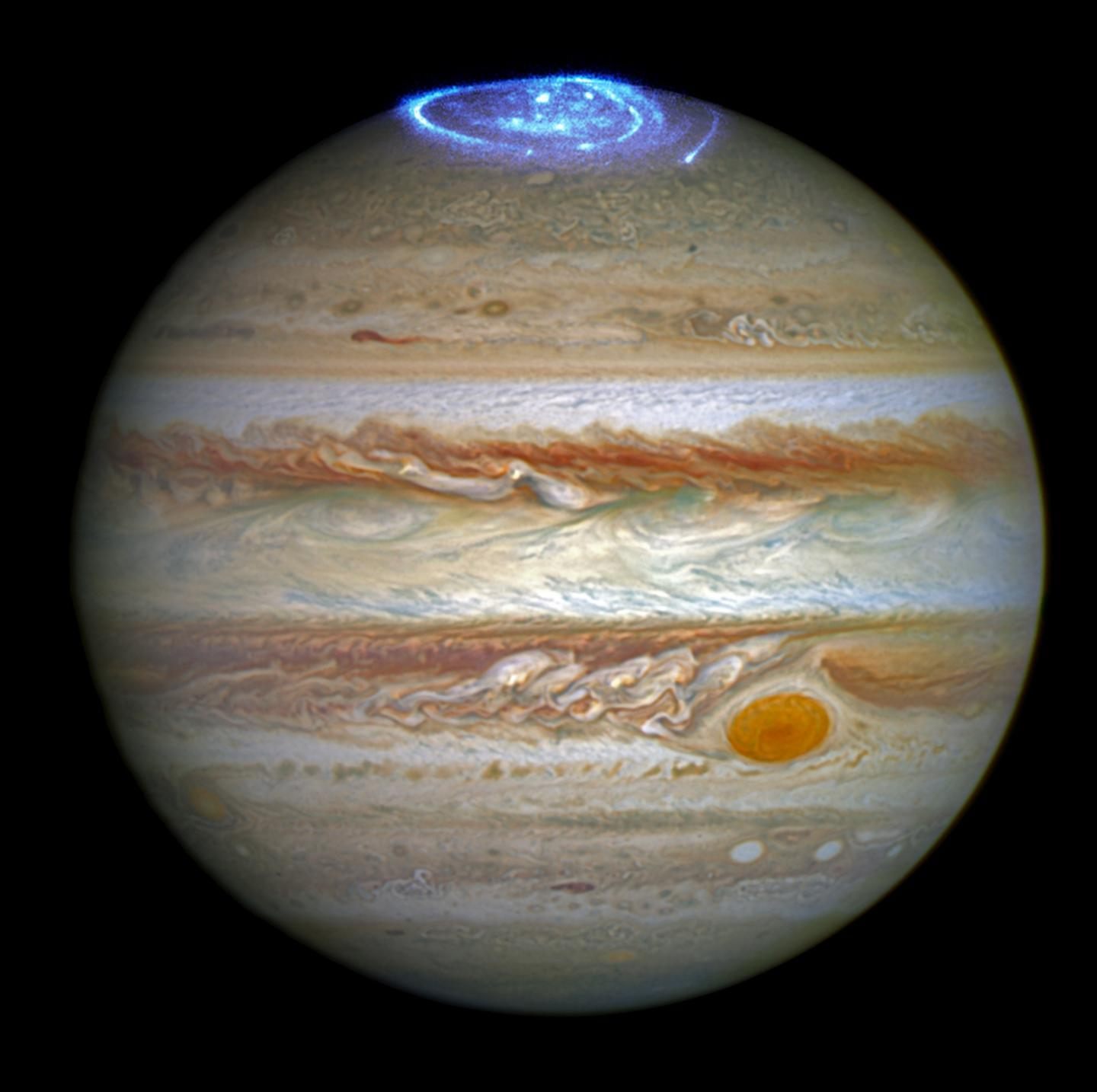Jupiter Is Even Weirder Than We Thought
Thanks to Juno, textbooks are going to need an overhaul.

We’ve known for a long time that Jupiter is a giant, weird planet. But we may have underestimated just how weird. The Juno spacecraft, launched in 2011, just sent back its first batch of scientific data and it is a doozy. The gas giant has a lumpy magnetic field, polar storms as big as Earth, and auroras unlike anything scientists have ever seen.
Researchers unveiled the new findings during a press conference on May 25, and published two papers in Science and another 44 papers in the journal Geophysical Research Letters. And all of that came out of just five passes by Jupiter in less than a year. Juno has barely scratched the Jovian surface.
It took three passes just to get a complete image of the planet’s south pole, roiling with storms as large as Mars. Scientists were surprised to see that the planet’s distinct bands don’t extend to the pole, and are instead replaced by tempestuous swirls. They were also surprised to find the planet’s north pole didn’t look the same. “We’re puzzled as to how they could be formed, how stable the configuration is, and why Jupiter’s north pole doesn’t look like the south pole,” said Scott Bolton, the project’s principle investigator, from the Southwest Research Institute, in a press release. It could be that in a year, the poles will look completely different. Stay tuned.

There are also massive solar storms at the poles that cause bright auroras. But unlike Earth’s, they are not caused just by the solar wind. Jupiter’s especially volcanic moon Io contributes sulfur gas that makes the auroras even brighter.
Between the poles other surprises lurked. The planet’s magnetic field, for example, caught scientists off guard. They were expecting a strong field, but the data show they underestimated it. They also weren’t expecting the field to be quite so variable. “Already we see that the magnetic field looks lumpy: it is stronger in some places and weaker in others,” said Jack Connerney, a planetary scientist at NASA’s Goddard Planetary Space Flight Center, in a press release. Scientists think there are large currents of liquid hydrogen churning in the planet’s outer core, generating the field.

Juno has sent back some incredible images and data from its first five flybys, and there’s going to be another major pulse of surprises when it passes over the famous Red Spot storm on July 11. Buckle your seatbelt—Juno’s taking us on an amazing ride.

















Follow us on Twitter to get the latest on the world's hidden wonders.
Like us on Facebook to get the latest on the world's hidden wonders.
Follow us on Twitter Like us on Facebook